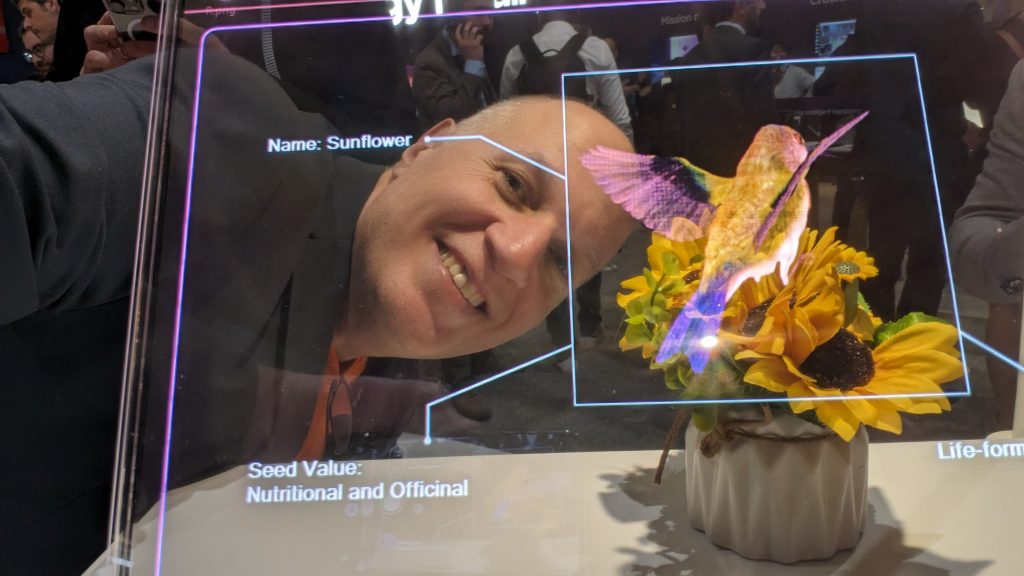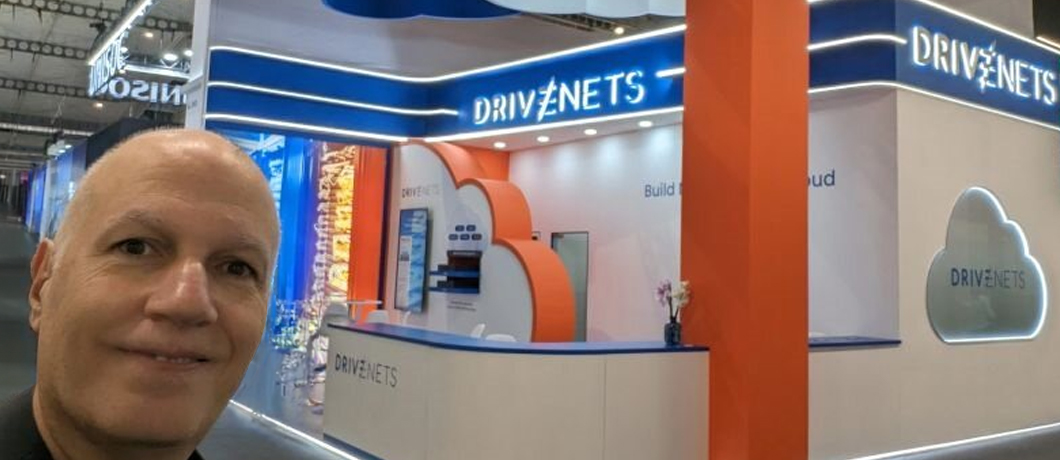|
Getting your Trinity Audio player ready...
|
AI is the buzzword of the year
Even before the show started, as I was walking through the huge construction site (of booths going up) it became evident that the buzzword of the year is AI.
Almost every wall of every booth included some kind of message around artificial intelligence, or at least a message that included AI (in ways that may or may not have made a lot of sense).
Beyond the AI messaging, there were also some AI implementations. The coolest example, by far, was at the e& (Etisalat) booth, where an AI-powered droid conducted a fluent conversation with the crowd.
For me, this was the coolest moment in the show – even more than the cool Lenovo concept of a transparent laptop.

AI is more than just AI>/h2>
Still, when talking about AI and telco, there is more to AI than just AI…
The phrase “AI networking” is actually quite confusing, as it can refer to AI-powered networking or the networking infrastructure of AI clusters. While the latter was less relevant to the general audience of MWC (though it was of interest to some), the first took a front stage at the event.
Two major announcements were made about AI-powered networking. The first (by Ericsson, Nokia, AWS, Microsoft, Nvidia and others) was about the launch of the AI-RAN Alliance and its goal of harnessing AI to enhance RAN performance. The second (by Deutsche Telekom, SK Telecom, e& and Singtel) was about the Global Telco AI Alliance becoming a joint venture company while focusing on developing “AI services” and the alliance’s “Telco AI Platform.”
Concrete use cases of AI for improvement of the telco business are usually around customer interaction (e.g., AI-powered chatbots). With that, I think the more interesting usage of AI is in the operations domain, typically dubbed AI-ops.
Take, for instance, the task of reducing MTTR (mean time to repair). There are two main parts, or segments, in measuring MTTR. The first is RCA (root cause analysis) and the other is the actual repair time.
It turns out the “analysis” part can be much, much longer than the “act” part, which resolves the faults once identified. The RCA part is also the one in which AI tools can dramatically shorten the time it takes to analyze large quantities of alarms from multiple network domains and to identify the fault’s root cause.
This is an extremely interesting trend for most network operators. In fact, a sufficiently smart AI system can do more than that – it can even predict, to some extent, network faults. By predicting faults it can prevent them, which will improve not only MTTR but also MTBF (mean time between failures).
Network operations – do we really need people still?
Speaking of MTBF, another issue raised a lot was human errors. Much effort is made in automation (with or without AI) in order to make the most common provisioning, configuration, maintenance and fault-handling tasks “human free.”
Some operators dream of a self-healing network, in which both the RCA and remedy/act parts will be automated and delivered by an AI-powered automation tool. But understanding that “hallucinations” are a major issue with generative AI, it seems like AI will be left with the RCA/recommendation part only, at least for now. Humans – don’t go anywhere just yet.
The network edge is back at the center
One of the drivers for extra automation in the network is the growth in investment in edge sites. When it comes to those sites, operators typically need to install, manage and maintain networking gear in remote sites – lots of remote sites. This means that operators want to ensure not only that the installation is “first time right” but also that the skills required for those tasks are minimal. This is where zero-touch provisioning (ZTP) and other automation techniques are needed the most.
Another topic derived from the growth of the edge is collapsing the optical layer into the router. ZR+ is a big hit in that context, and we will hear more about this topic towards OFC in late March in San Diego…
Remember 5G?
One topic that did not generate a lot of interest at MWC was 5G – and no, this is not because everyone was talking about 6G. It’s because, I think, operators are very frustrated with the hard time they are having in monetizing their years-long and huge investments in spectrum and gear. In fact, I had more talks about topics like quantum-safe encryption and network APIs than I had about 5G.
Perhaps next year …
Download White Paper
Edge Networking Solution for Service Providers




